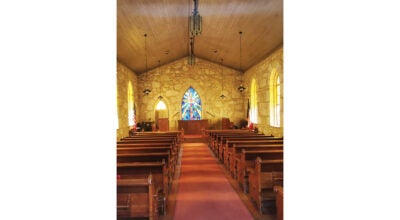Some things don’t, some things do change in Cuba
Published 6:00 am Monday, January 29, 2001
(EDITOR’S NOTE — After a recent trip to Cuba with a group ofAmerican journalists, DAILY LEADER Editor and Publisher Bill Jacobswill share his thoughts on what he found over the next fewSundays.)
HAVANA, CUBA — One could describe Havana as an incrediblybeautiful city with some of the finest colonial architecture in theworld, contrasted by poverty and substandard living standards.Those living standards are an indictment to the failure of FidelCastro’s socialist system.
Then again, one could describe Havana as a city undergoing arenaissance, supported by an economy that is growing moreprosperous due to an influx of foreign investment, which is anindictment of the success of Fidel Castro’s experimentation withlimited capitalism.
Both describe Havana and Cuba — a city and country that are inconflict with itself over its socialist past and its uncertainfuture as a mature socialist revolution enters its fifthdecade.
Standing three and four stories tall, colonial style buildingsthat date back to the earliest days of Cuba’s history are areflection of the wealth that once fed a thriving but often corrupteconomic system before the Castro revolution in 1959.
Inside these historic buildings, which are virtually crumblingbefore your eyes — live the people of Cuba, crowded into smallapartments that have been carved into these once majestic but nowdirty buildings. Running water is nonexistent. Water trucks makedeliveries twice a week. Electricity is readily available, butoutages are common. Telephone service is limited. Stretching fromthe balconies of each building is the day’s laundry, drying in thewarm Caribbean breeze as Cuban children play stick ball in thestreets.
Before I paint too bleak a picture, realize that the streets arefull of friendly smiling Cubans talking to their neighbors andlistening to live Rumba music blaring from restaurants and bars.These city dwellers sit on street corners and in doorways laughingand carrying on, seemingly, without a care in the world. They are ahappy and proud people, eager to make friends of the Americanstheir government tells them to hate.
You see, under the Cuban socialist system, all of their basicnecessities are taken care of by the state. Cubans live in freehousing, are given free food, have all their medical needs takencare of and do not have to worry about education. It, too, isfree.
But there is a cost, though not economic, to every Cuban. Theirdaily lives are a closely scrutinized book. Everything they do isobserved and monitored. They live under the prying eyes of thepolice, who are standing on almost every corner and must reportregularly to the CDR official who lives in their building. CDRstands for the Committee for the Defense of the Revolution.
Each block is governed by a CDR official who keeps a watchfuleye over his flock — pointing them in the right direction whenthey stray, making sure they follow the communist party line andattend the regular anti-American demonstrations used by Castro tomotivate the masses.
The CDR controls everything from the handling of the monthlyfood rations to the quality of living conditions. The hand of theCDR is quick and unmerciful. I asked an individual what happens ifyou anger the CDR — the response was insightful. After a longpause and with an emphasis on “not,” he said, “You do not anger theCDR,”
Again, do not get the impression that machine gun-totingmilitary police are glaring at everyone through dark sunglasses. Wesaw none of that. In fact, the streets were quite safe and neverdid I feel tension or pressure from someone wondering what anAmerican was doing walking down the streets of Cuba.
What we saw were neatly dressed police officers, like you findin any American city, just more of them. Castro does not need gunsto control the masses. His weapon of control is the fear ofreprisal.
In stark contrast is the venture by Castro into capitalism. Newluxury hotels have been and are being built to handle the influx oftourism from Europe, Canada and — even despite the trade embargo–the United States. Cubans can now venture into limitedentrepreneurship to earn extra cash by opening small restaurants orrenting out rooms, a concept that is foreign to the communistideal.
A new generation of Cubans are being trained to work in Castro’sventure into capitalism. For these young Cubans, a new found wealthis being generated that threatens the basic fabric of socialism –a multi-class socioeconomic system of ‘haves’ and ‘have nots’.
For Castro it is a balancing act to keep his social revolutiongoing while finding a way to keep bread on the table and the Cubanpeople happy.





